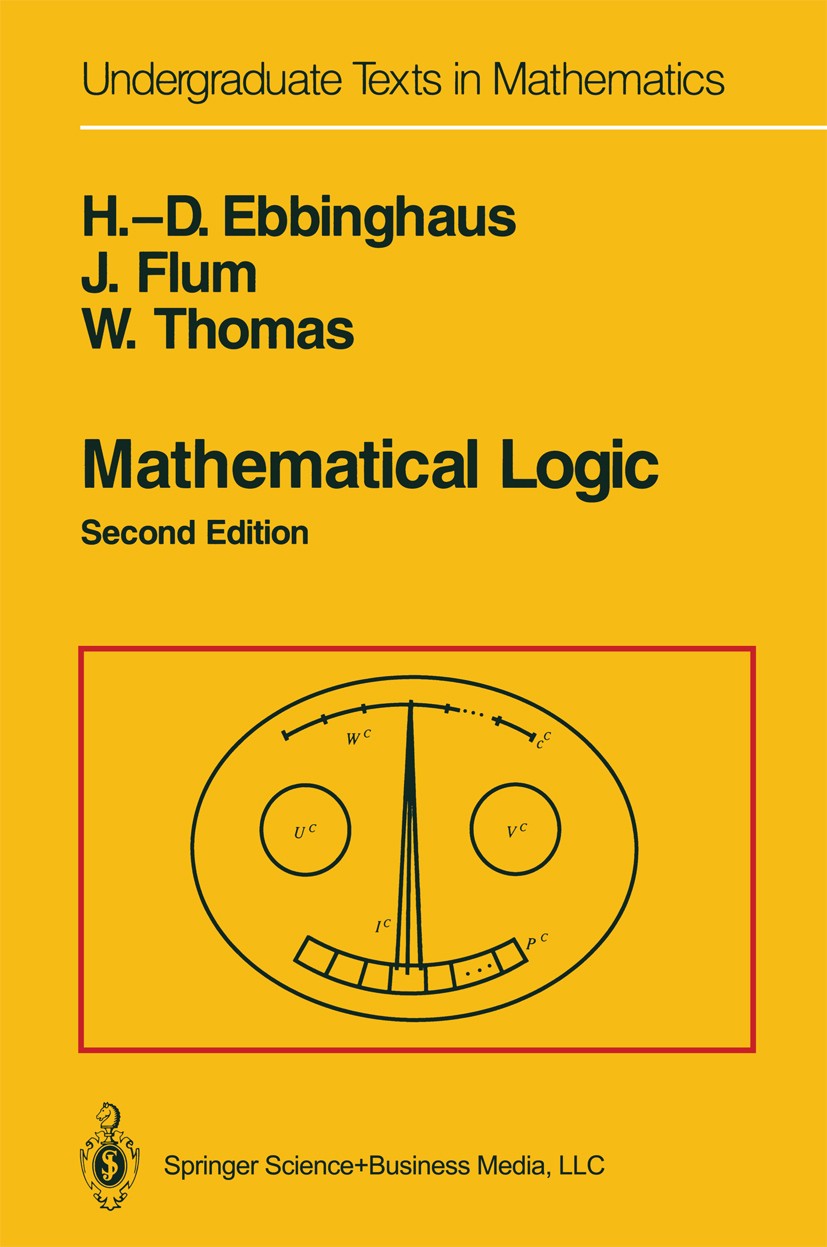| 書目名稱 | Mathematical Logic |
| 編輯 | H.-D. Ebbinghaus,J. Flum,W. Thomas |
| 視頻video | http://file.papertrans.cn/627/626206/626206.mp4 |
| 叢書名稱 | Undergraduate Texts in Mathematics |
| 圖書封面 |  |
| 描述 | What is a mathematical proof? How can proofs be justified? Are there limitations to provability? To what extent can machines carry out mathe- matical proofs? Only in this century has there been success in obtaining substantial and satisfactory answers. The present book contains a systematic discussion of these results. The investigations are centered around first-order logic. Our first goal is Godel‘s completeness theorem, which shows that the con- sequence relation coincides with formal provability: By means of a calcu- lus consisting of simple formal inference rules, one can obtain all conse- quences of a given axiom system (and in particular, imitate all mathemat- ical proofs). A short digression into model theory will help us to analyze the expres- sive power of the first-order language, and it will turn out that there are certain deficiencies. For example, the first-order language does not allow the formulation of an adequate axiom system for arithmetic or analysis. On the other hand, this difficulty can be overcome--even in the framework of first-order logic-by developing mathematics in set-theoretic terms. We explain the prerequisites from set theory necessary for this purpo |
| 出版日期 | Textbook 19942nd edition |
| 關(guān)鍵詞 | Arithmetic; Equivalence; Logic; Mathematische Logik; compactness theorem; mathematical logic; model theory |
| 版次 | 2 |
| doi | https://doi.org/10.1007/978-1-4757-2355-7 |
| isbn_ebook | 978-1-4757-2355-7Series ISSN 0172-6056 Series E-ISSN 2197-5604 |
| issn_series | 0172-6056 |
| copyright | Springer Science+Business Media New York 1994 |
 |Archiver|手機(jī)版|小黑屋|
派博傳思國(guó)際
( 京公網(wǎng)安備110108008328)
GMT+8, 2025-10-20 05:38
|Archiver|手機(jī)版|小黑屋|
派博傳思國(guó)際
( 京公網(wǎng)安備110108008328)
GMT+8, 2025-10-20 05:38


